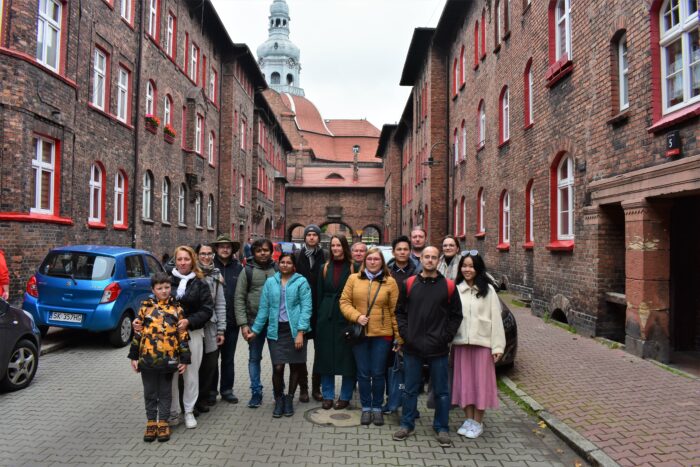On the second Saturday of October, an integration meeting took place, as a part of the project “Come2US – professionalization and centralization of support of the foreign employees of the University of Silesia in Katowice”.
It was an opportunity to learn about the regional culture in the ethnographic museum „Park Etnograficzny w Chorzowie”, and to sightsee the Nikiszowiec quarter and the city of Katowice.
We have started our excursion in the Muzeum „Górnośląski Park Etnograficzny w Chorzowie”.
Together with our guide we have seen the Cottage from Istebna (dated 1794), the School from Wapienica (dated 1853), the Mill from Imielin, and many other historical buildings. Our guide told us how life of the Silesians of XVIII – XIX century looked like and all participants had a chance to sit in the village classroom from the XVIII century.
Then the bus took us to Nikiszowiec – the picturesque housing development built for miners working in the Giesche (Wieczorek) mine and their families, which was built in years 1908-1915. Nikiszowiec became famous among workers’ quarters and many films about Silesia have been shot there. It was also included in the List of Historic Monuments.
The third place we visited was a part of Katowice – a young, diverse city with an interesting urban layout and a heart of over two-million metropolis. Thanks to our guide, we have discovered the original pre-war tenement houses and modernist buildings from the inter-war period when Katowice was the capital of the autonomic Silesian Voivodeship.
We have closed our excursion by dining at the „Kaktusy. Koncept Kulinarny” – the old-new restaurant. The building in which Kaktusy is situated,at Dworcowa 9, was built at the beginning of the XX century. In the late 50s, Kaktusy became very famous place where manyartists, politicians and dignitaries used to meet . In the years 1919-1920, during the Silesian Uprisings, the building also played an important role as a voting point in the plebiscite.
It was our third excursion organized by the Welcome Point of the University of Silesia for employees from abroad. We are very glad that together we could experience the culture, share the love for the region, discover historical places and get to know each other. We want to thank all participants of the excursion and we are looking forward to the next one.
Photo from the “Come2US” project archive
Nikiszowiec Historic Mining District. St. Anne’s Street, with a view of St. Anne’s Roman Catholic Parish in the background.
GALLERY
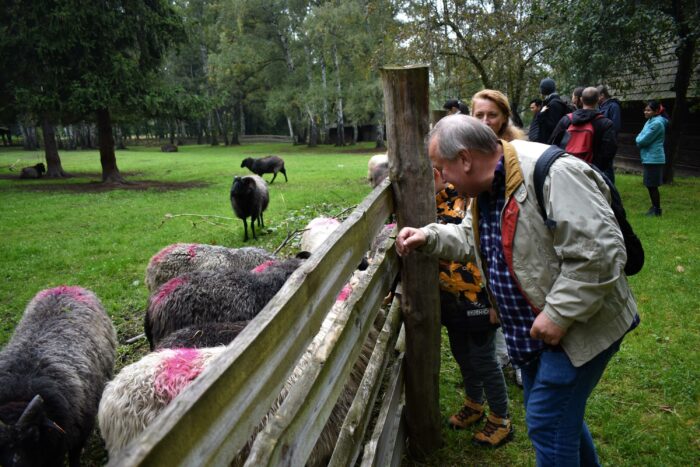
Muzeum Upper Silesian Ethnographic Park in Chorzów. Koszor (a moveable pen for sheep).
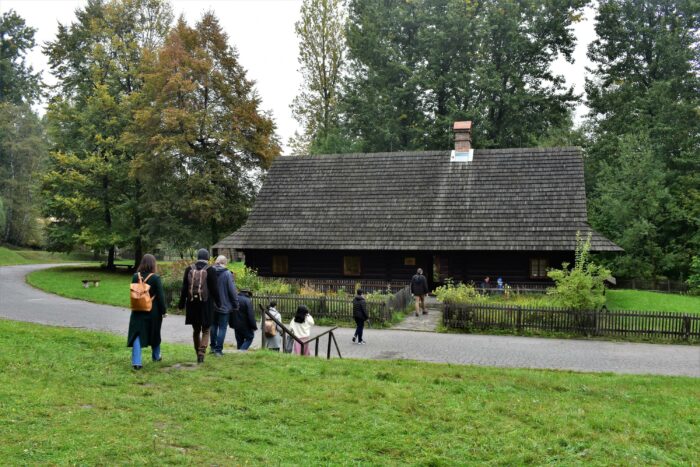
Muzeum Upper Silesian Ethnographic Park in Chorzów. Pathway to School building from Wapienica (1853).
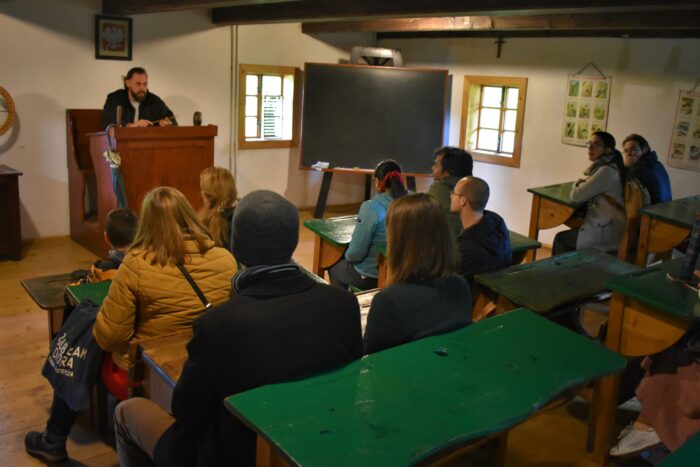
Muzeum Upper Silesian Ethnographic Park in Chorzów. Pathway to School building from Wapienica (1853).
Employees abroad had the opportunity to move back in time and feel like students of a folk school of the 19th century.
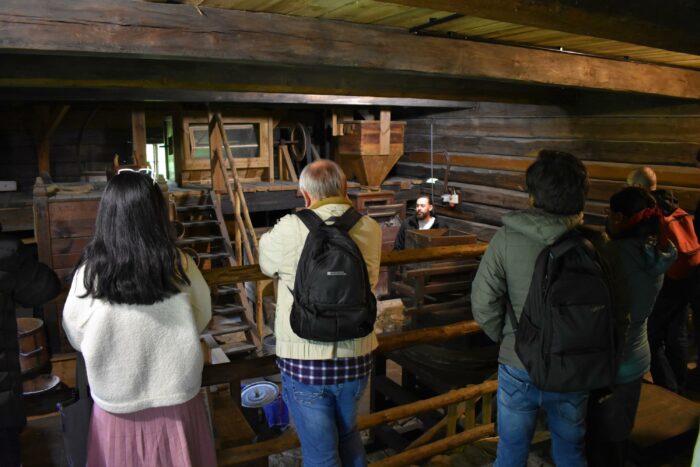
Muzeum Upper Silesian Ethnographic Park in Chorzów. Watermill from Imielin (the first half of the 18th century).
The guide talked about the details of the miller’s work and showed the equipment for milling grains to obtain flour.

Muzeum Upper Silesian Ethnographic Park in Chorzów. Church from Nieboczowy (1791).
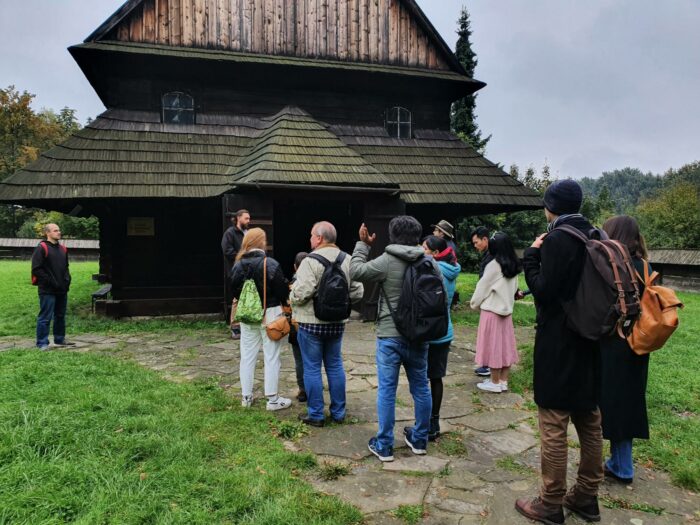
Muzeum Upper Silesian Ethnographic Park in Chorzów. Church from Nieboczowy (1791).
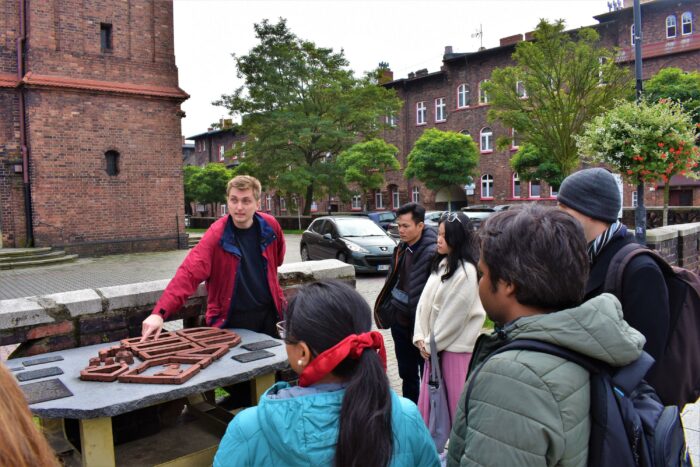
Nikiszowiec Historic Mining District. The guide shows a maquette of Nikiszowiec.
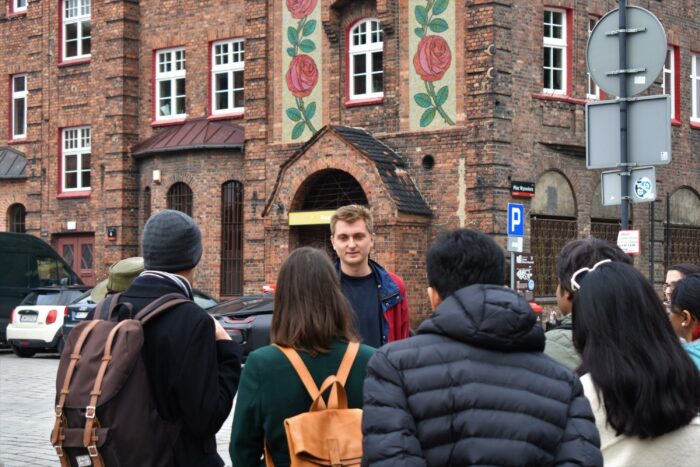
Nikiszowiec Historic Mining District. In the background is a section of Block II, which houses the postal agency.
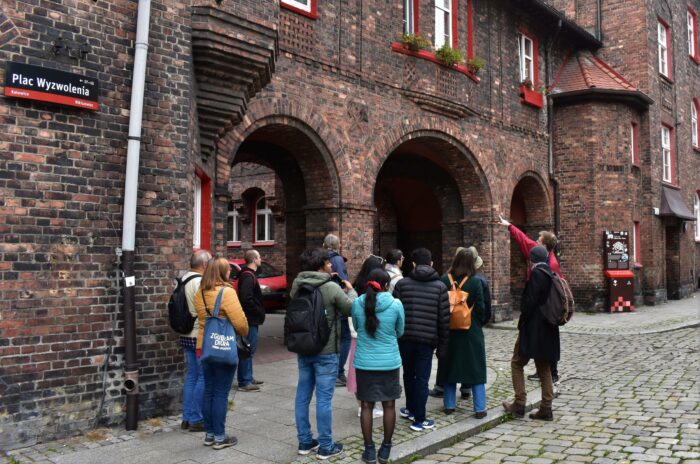
Nikiszowiec Historic Mining District. Square Liberation.

“Wieczorek” Coal Mine. In the background is the clock tower of the guild building “Pulaski” shaft.
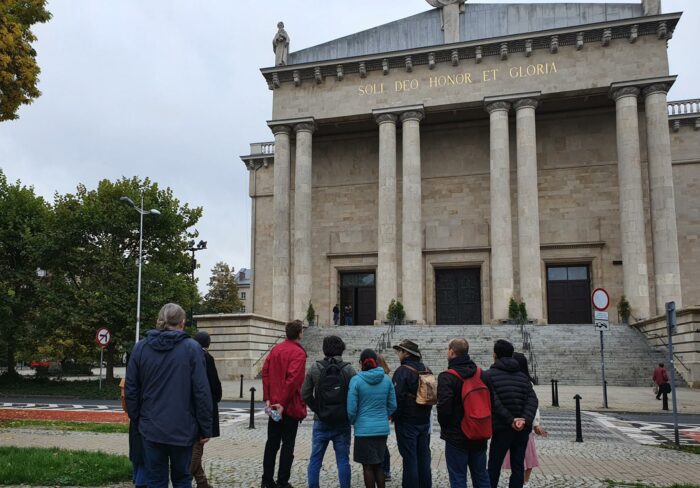
Cathedral of Christ the King, Katowice.
„Come2US – profesjonalizacja i centralizacja obsługi pracowników zagranicznych w Uniwersytecie Śląskim w Katowicach”
Projekt finansowany przez Narodową Agencję Wymiany Akademickiej w ramach programu Welcome to Poland (2020).






